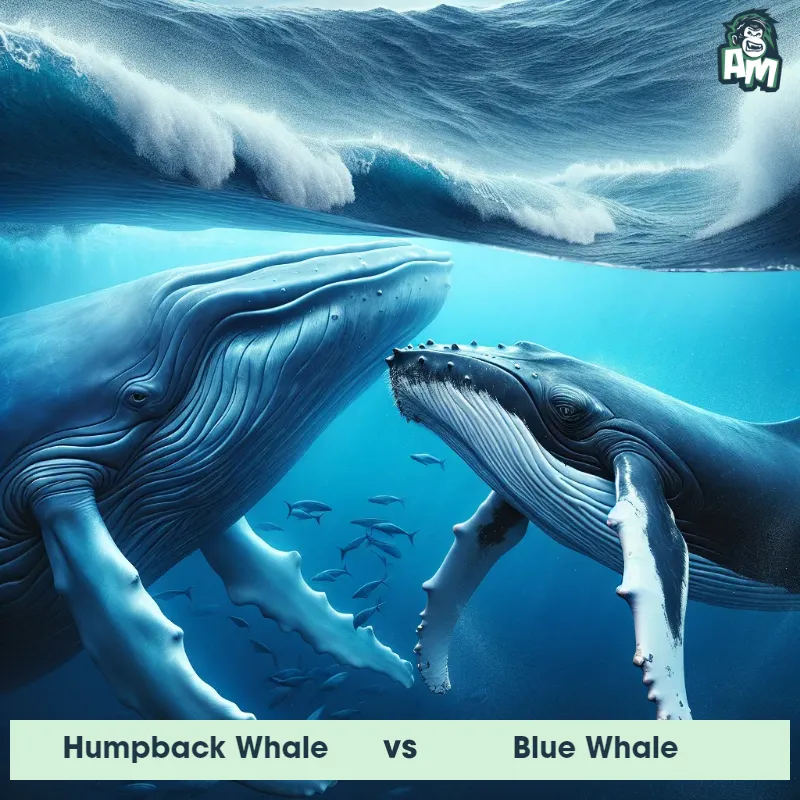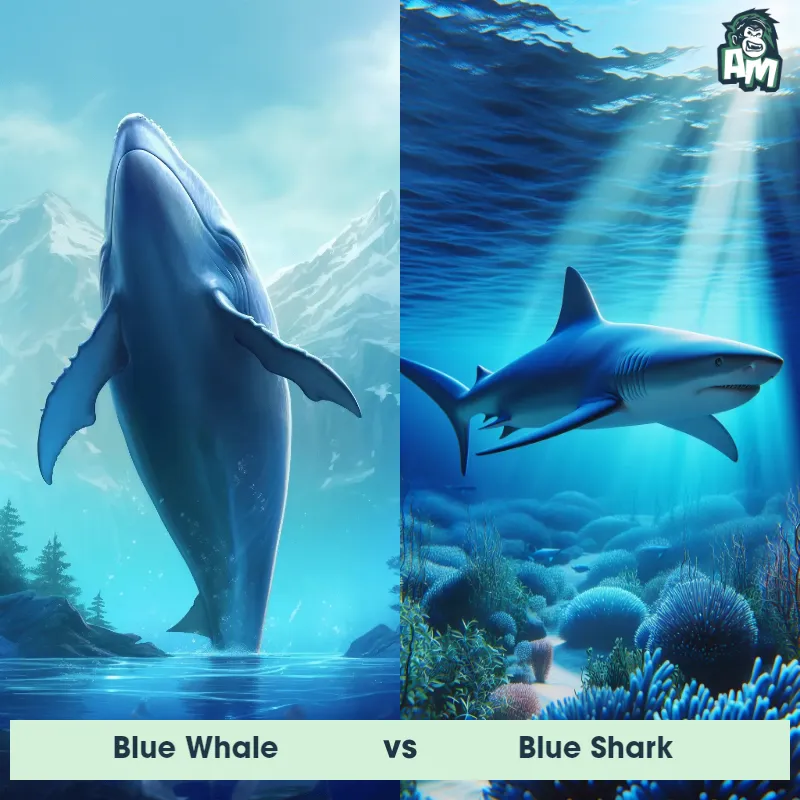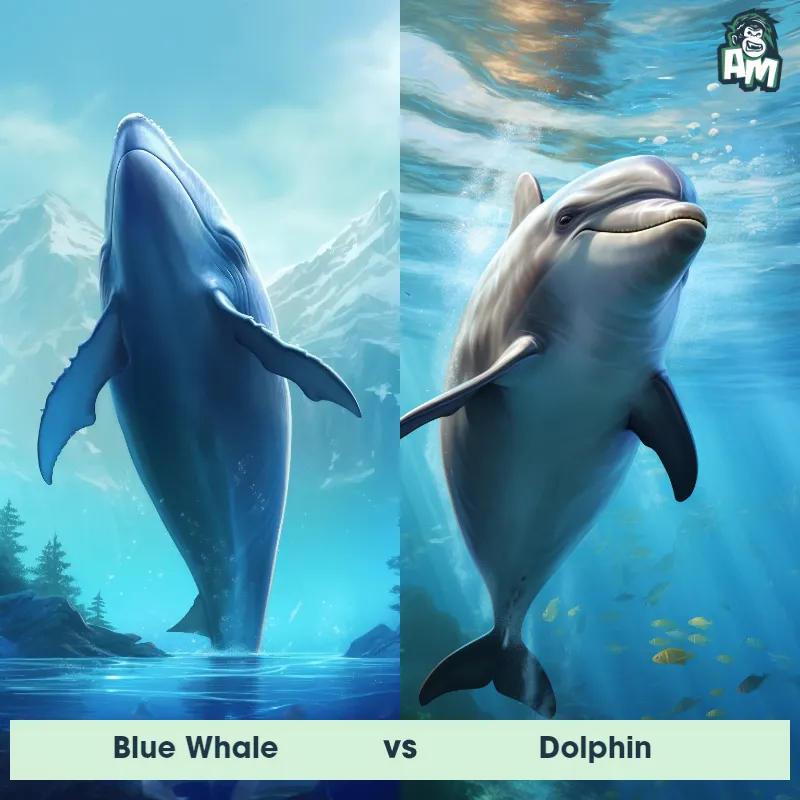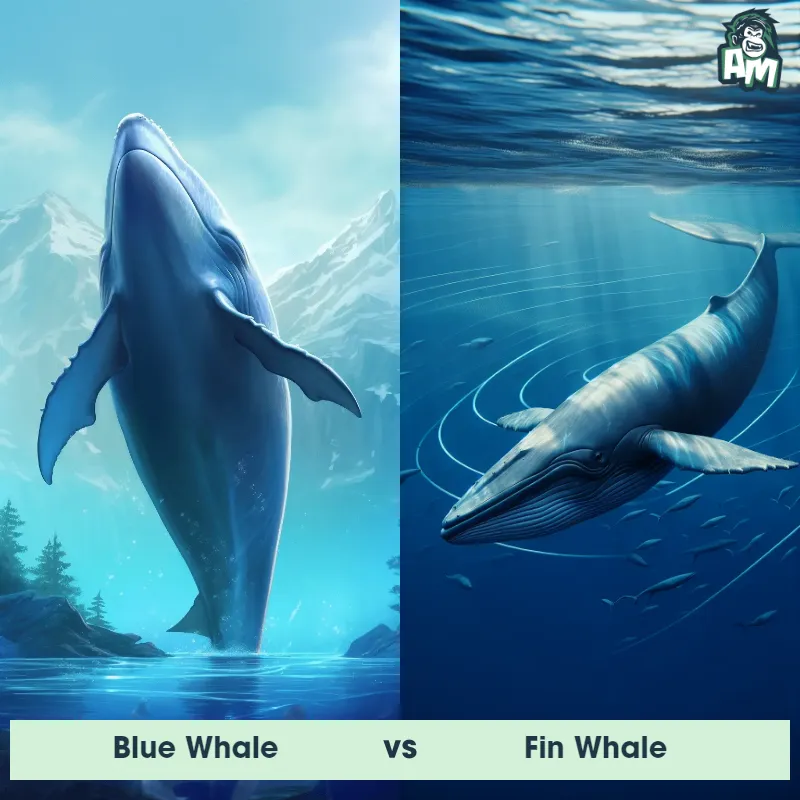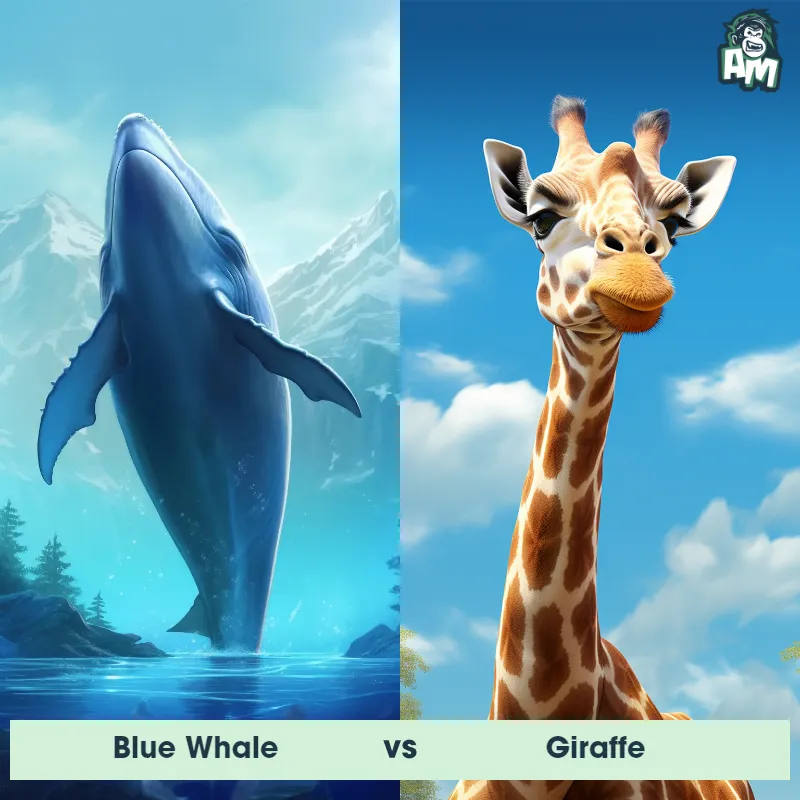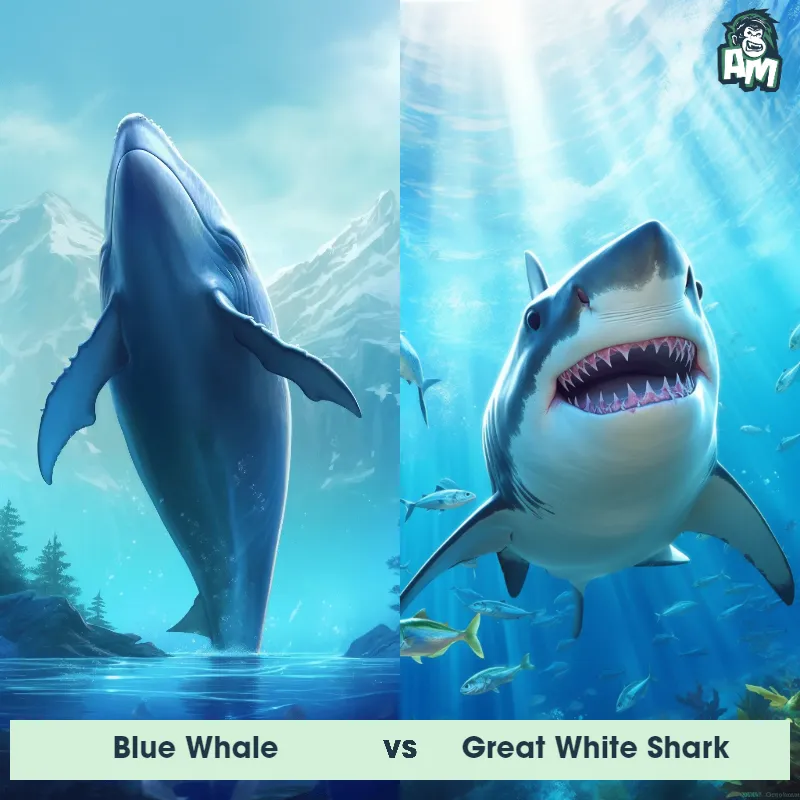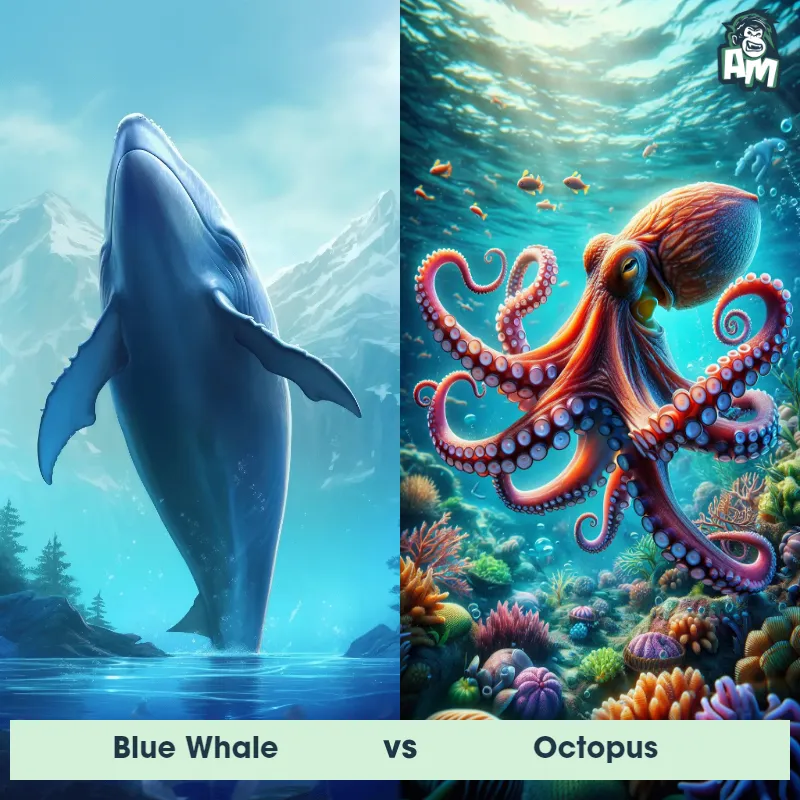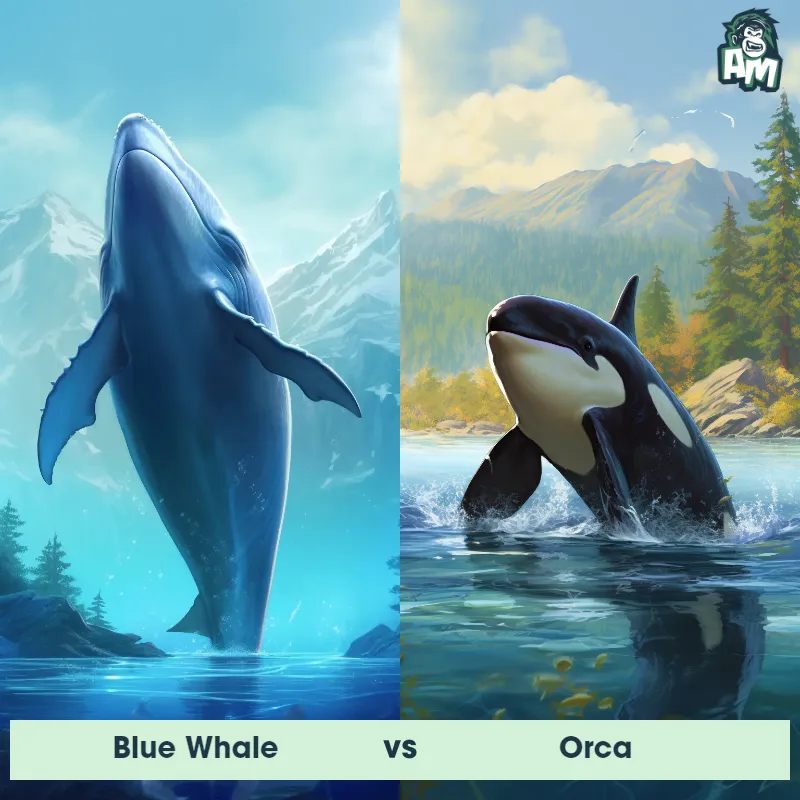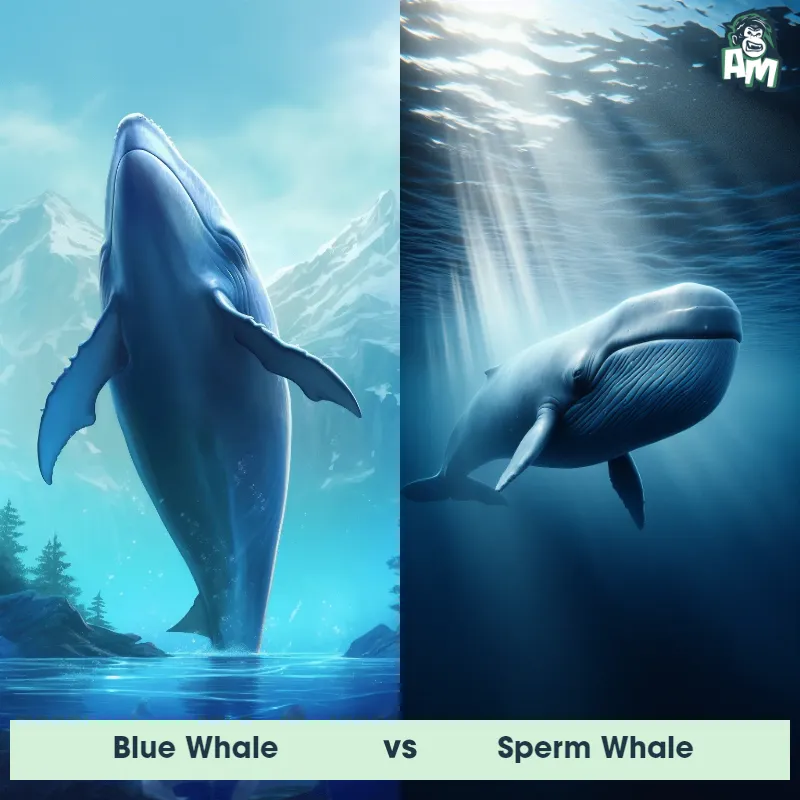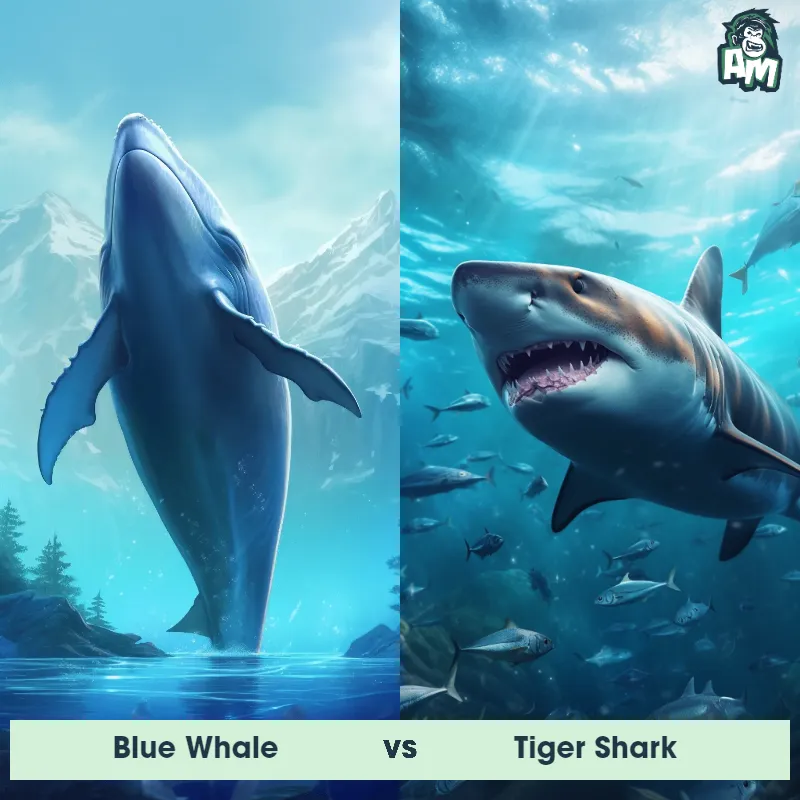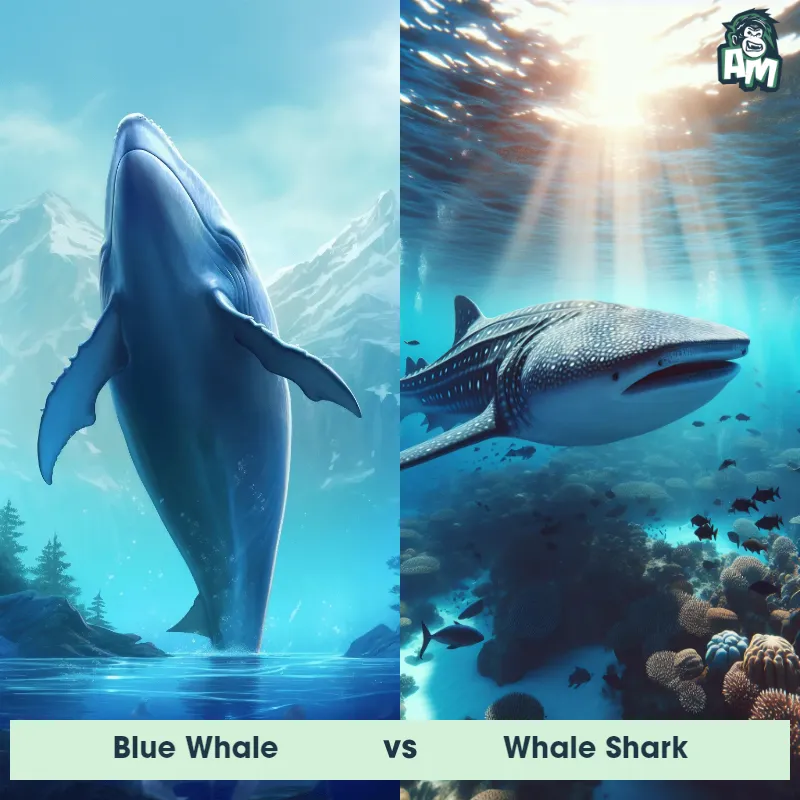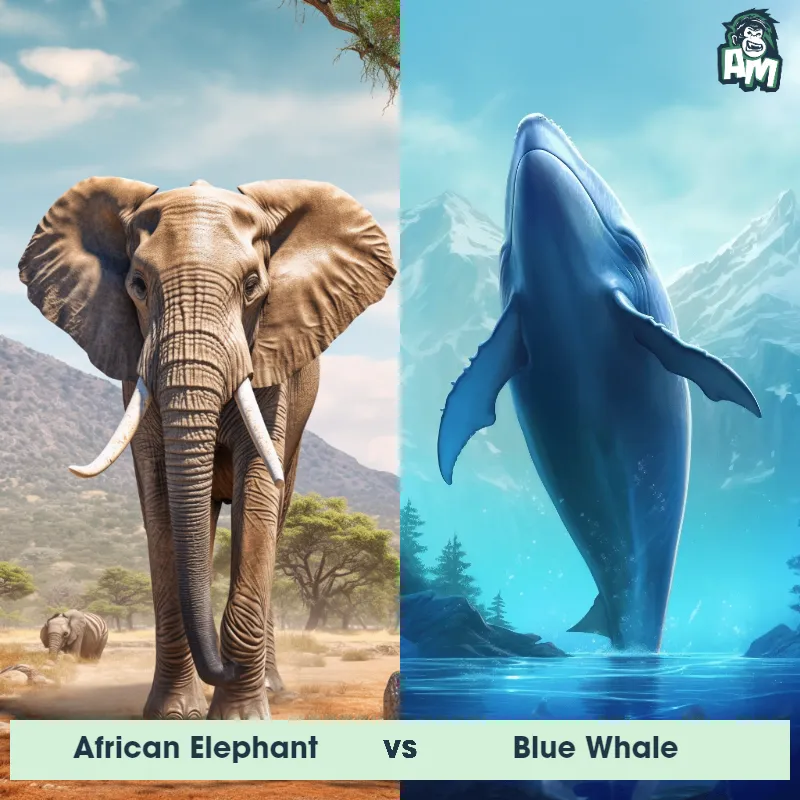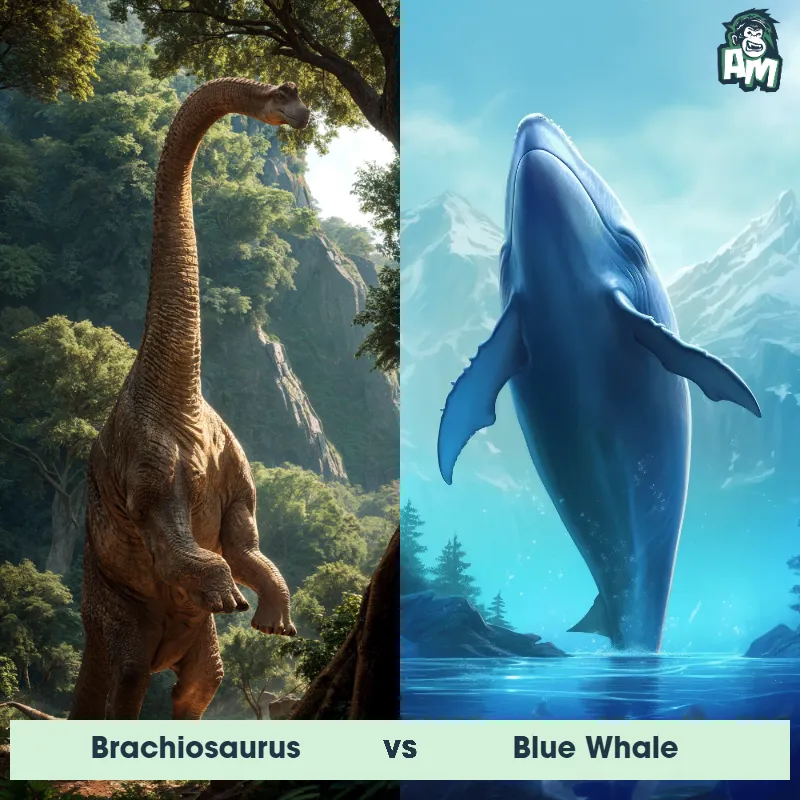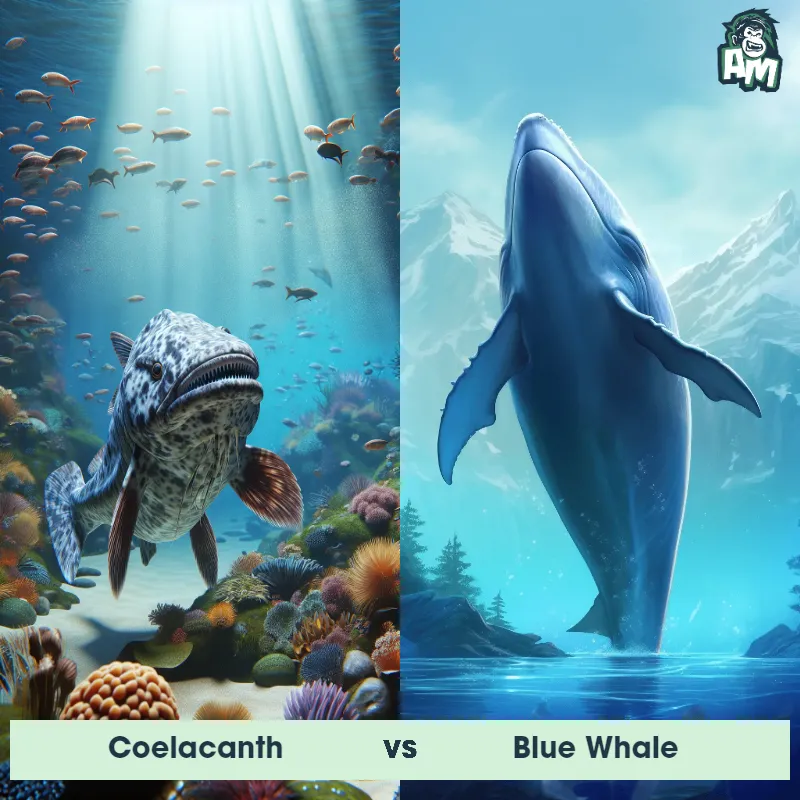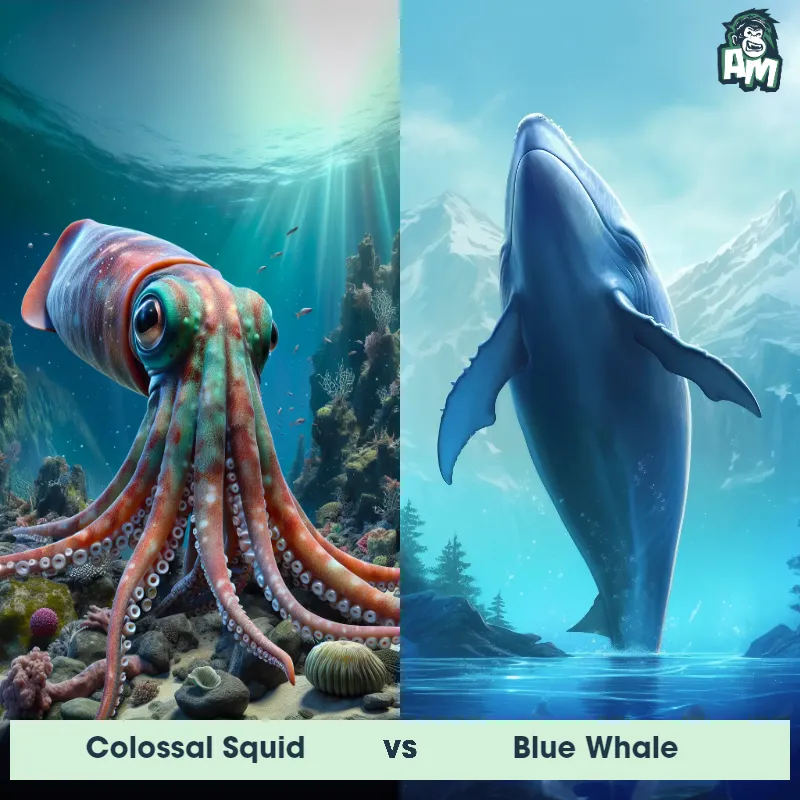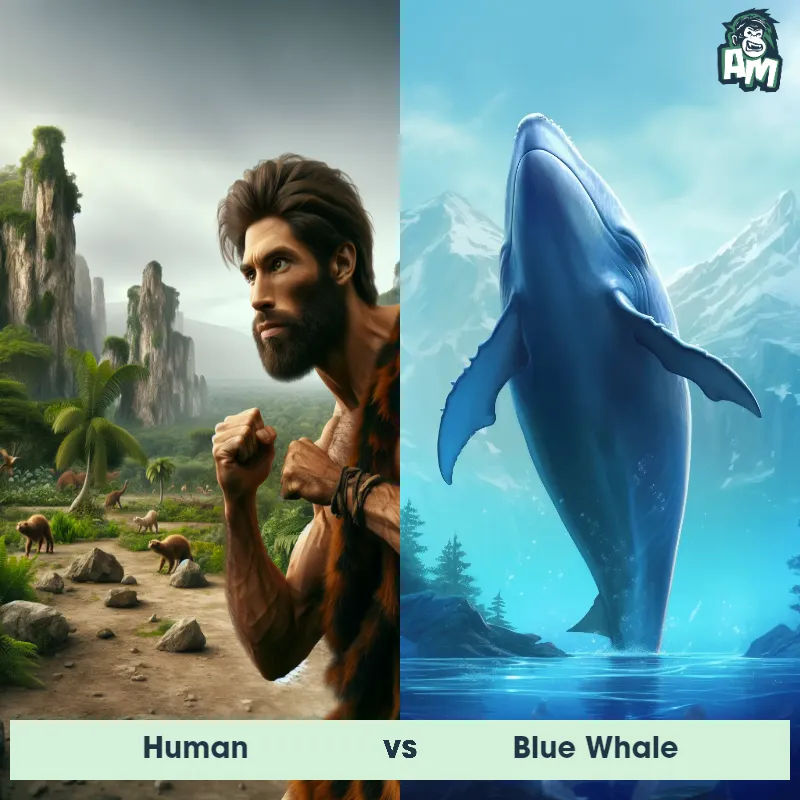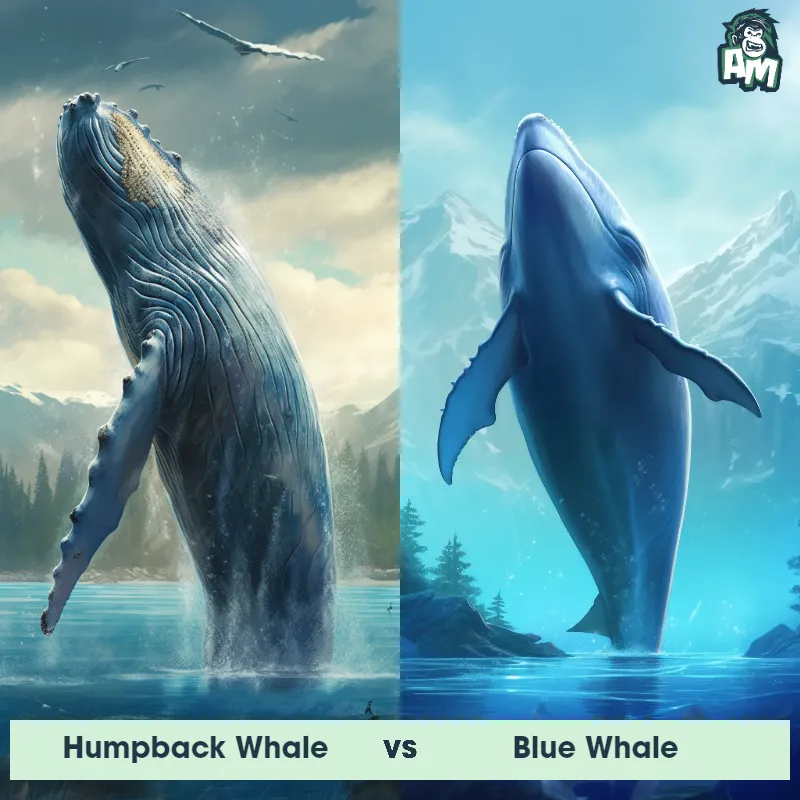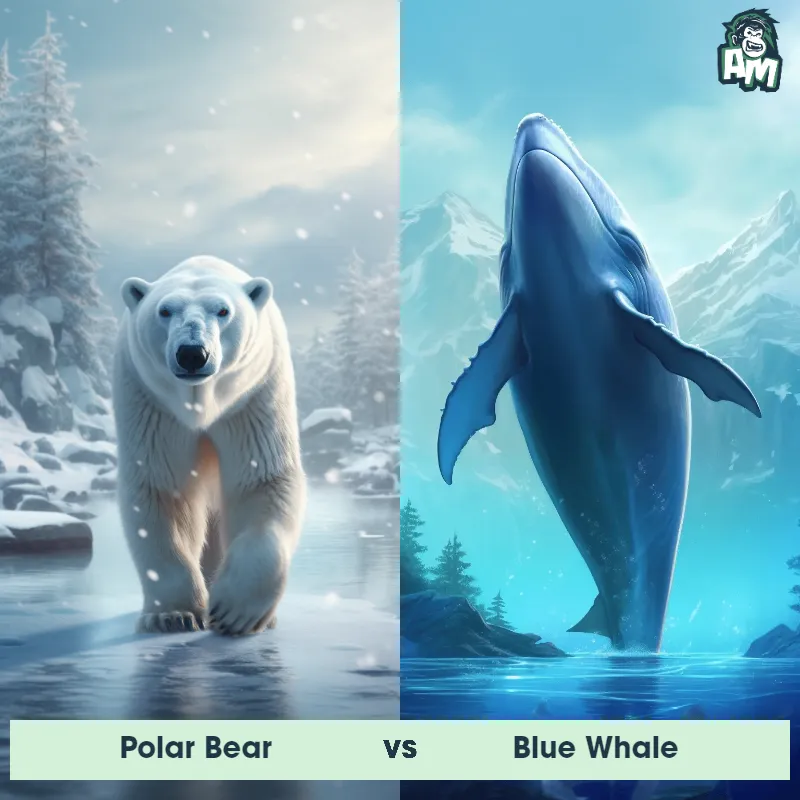The Blue Whale
The Blue Whale, scientifically known as Balaenoptera musculus, is the largest animal ever to have existed on Earth. These magnificent creatures can grow up to 98 feet long, and their weight can reach an astounding 200 tons. With distinct blue-gray coloration and a slender body, they have a massive head and a mouth that contains baleen plates used to filter feed. Blue Whales possess a heart the size of a small car and can consume up to 4 tons of krill per day, their preferred food source.
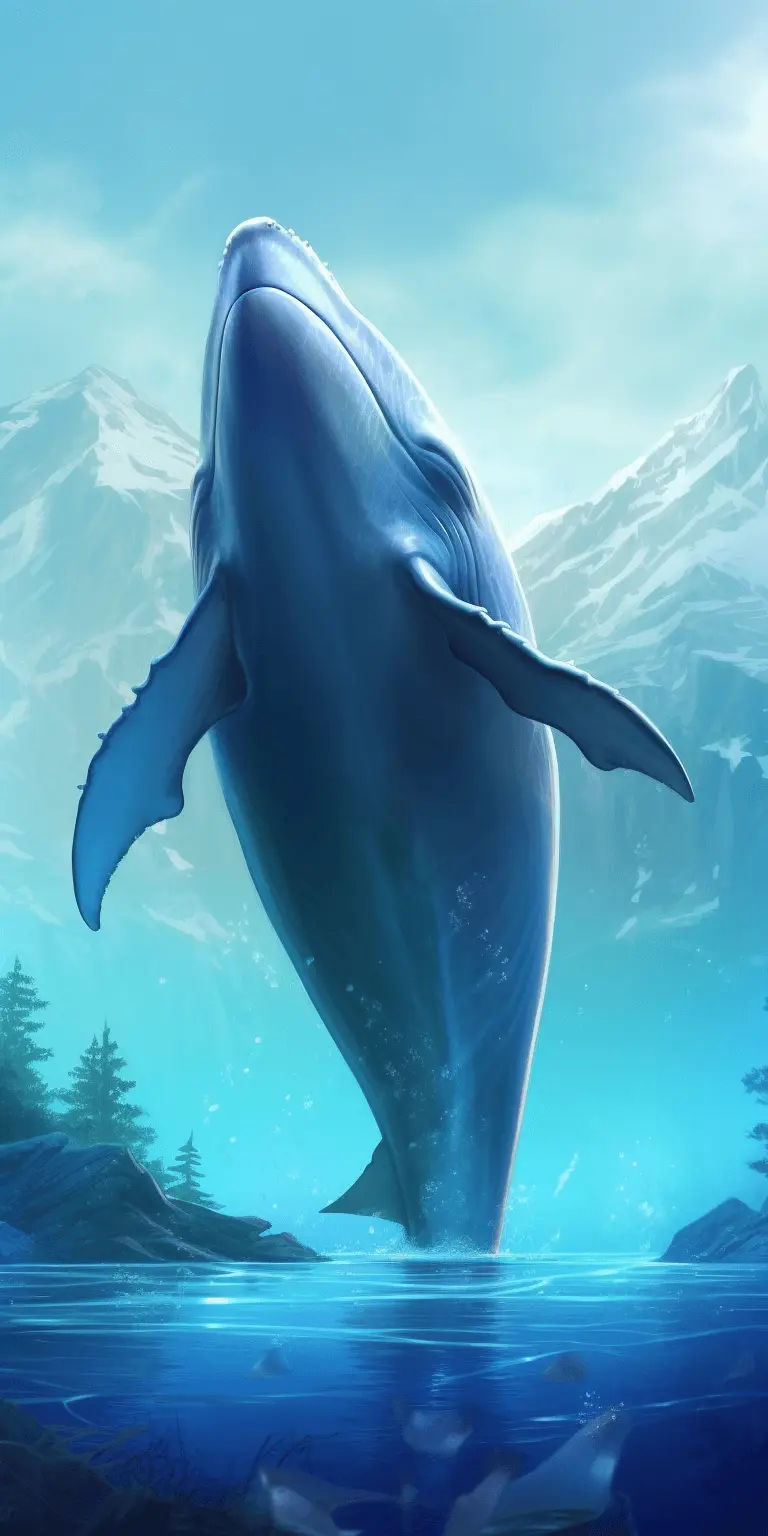
| Blue Whale | |
|---|---|
| Size | Up to 100 feet (30.5 meters) |
| Weight | Up to 200 tons (181 metric tons) |
| Speed | Speed: 20 mph (32.19 km/hr) |
| Key Strength | None |
| Biggest Weakness | Slow movement |
| Scientific Name | Balaenoptera musculus |
| Family | Balaenopteridae |
| Habitat | Open ocean |
| Geography | Worldwide |
| Diet | Krill |
| Lifespan | 80 years - 90 years |

The Blue Whale
The Blue Whale, scientifically known as Balaenoptera musculus, is the largest animal ever to have existed on Earth. These magnificent creatures can grow up to 98 feet long, and their weight can reach an astounding 200 tons. With distinct blue-gray coloration and a slender body, they have a massive head and a mouth that contains baleen plates used to filter feed. Blue Whales possess a heart the size of a small car and can consume up to 4 tons of krill per day, their preferred food source.
Fun Fact: Despite their immense size, the Blue Whale survives by feeding on tiny shrimp-like creatures called krill, which are about the size of a paperclip.
| Blue Whale | |
|---|---|
| Size | Up to 100 feet (30.5 meters) |
| Weight | Up to 200 tons (181 metric tons) |
| Speed | Speed: 20 mph (32.19 km/hr) |
| Key Strength | None |
| Biggest Weakness | Slow movement |
| Scientific Name | Balaenoptera musculus |
| Family | Balaenopteridae |
| Habitat | Open ocean |
| Geography | Worldwide |
| Diet | Krill |
| Lifespan | 80 years - 90 years |
Match Highlights
Blue Whale Matchups
We use AI to simulate matchups between the Blue Whale and other animals. Our simulation considers size, strength, and natural predatory behaviors to determine the most likely outcome.
Blue Whale: Diet, Predators, Aggression, and Defensive Behaviors
What do Blue Whales eat?
Blue Whales are filter feeders, meaning they primarily feed on small shrimp-like animals called krill. They consume massive amounts of krill every day, using their baleen plates to filter the krill out of the water as they swim. Blue Whales can consume up to 4 tons of krill per day during the feeding season.
Do Blue Whales have any predators?
As the largest animal on Earth, adult Blue Whales have very few natural predators. However, they are known to occasionally fall victim to killer whale attacks. Killer whales, also known as orcas, are known to target young or sick Blue Whales. Overall, humans pose the biggest threat to Blue Whales through activities like hunting, fishing gear entanglement, and ocean pollution.
Are Blue Whales aggressive?
Blue Whales are not known to be aggressive towards other animals, including humans. They are usually gentle giants that pose no threat to other species. Blue Whales are often solitary creatures and are not territorial. However, they can become agitated when approached closely by boats or humans, which can sometimes lead to accidental collisions.
Do Blue Whales fight with each other?
Blue Whales are not known to engage in physical fights with each other. They are peaceful creatures that typically avoid confrontation. They communicate using vocalizations that can travel long distances through the water, allowing them to keep in touch with other whales over great distances. When it comes to disputes over resources or mates, Blue Whales are more likely to use vocalizations and displays to establish dominance rather than physical violence.
How do Blue Whales defend themselves?
Blue Whales rely on their sheer size and strength as their primary defense mechanism. Their large bodies and thick blubber provide protection from predators, while their massive size makes them intimidating to most potential threats. When faced with a threat, Blue Whales can use their tail flukes to slap the water or create a loud noise underwater as a warning signal to deter predators or unwanted interactions.
What is Blue Whales' biggest weakness in a fight?
Despite their large size and strength, Blue Whales have a vulnerability in their slow speed and mobility. Their massive bodies make them slow swimmers compared to more agile predators like killer whales. When faced with a fast and maneuverable predator, Blue Whales may struggle to defend themselves or escape quickly. This lack of agility can make them more susceptible to attacks, especially when they are young or sick.
Fun Fact: The songs of male Blue Whales can be heard from hundreds of miles away, making them the loudest animal on Earth, with their low-frequency calls reaching levels of 188 decibels.
Fun Fact: Blue Whales have remarkable migration patterns, traveling thousands of miles each year between their feeding and breeding grounds. They undertake this journey guided by the Earth's magnetic field, displaying an incredible sense of navigation and orientation.



